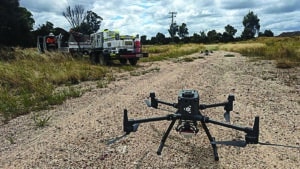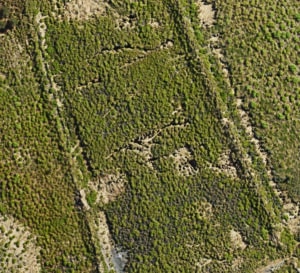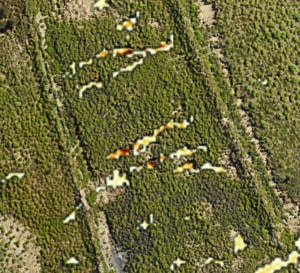A partnership between Dendra and the Jellinbah coal mine has led to the creation of foundational rehabilitation technologies and methodologies.
Technology has aided the evolution of the mining industry in countless ways. It has improved the synergy of the mining value chain, driven higher safety standards, and created new environmental opportunities, to name a few.
For the Jellinbah mine in Queensland’s Bowen Basin, technology has facilitated greater environmental understanding and vision of an expansive coal operation.
Through its mission to deliver actionable insights at scale, Dendra has provided Jellinbah the platform and technological smarts to proactively plan and implement its rehabilitation practices.
As Jellinbah environmental superintendent Nigel Ryan explained, the collaboration between the two parties has been one of firsts.
“With the help of Dendra, we have been able to tailor environmental data to what is most beneficial for the Jellinbah mine site and to what is required by the regulator,” Ryan told Australian Mining.
“We’ve developed new solutions and methodologies as part of this.”
Like any mine, the Jellinbah operation is subject to its own unique erosion challenges, which not only affects the mine’s ability to appropriately rehabilitate its land but can also lead to compliance issues when eroded material is transported off-site.

Image: Dendra
“When the site receives moderate rains, eroded material can be transported into drainage channels, creeks or rivers, and then potentially off site,” Ryan said.
“This then becomes a compliance issue, because you’re not controlling your contaminants on-site, which may be in breach of your environmental authority and licence to operate.”
To mitigate the mine’s erosion risks, Jellinbah and Dendra have established a transparent and reciprocal relationship that simultaneously supports the continued advancement of Dendra’s technology and Jellinbah’s environmental practices.
“We help Jellinbah implement holistic ways of understanding their land and provide a central database where all the site’s data is located, from vegetation cover, where weeds are, where erosion is,” Dendra lead ecological consultant Maxim Stoker told Australian Mining.
“By reusing existing customer LiDAR (light detection and ranging), we can generate erosion insights over the entire site, without needing to deploy boots on ground.
“We’re trying to empower Jellinbah to pinpoint where they have erosion features that impact rehabilitation. By giving them a comprehensive and targeted data set, they know where to look and they know what’s going on, which gives them greater capacity to make informed decisions.”
Through its RestorationOS solutions, Dendra deploys drone and remote sensing technologies to map and survey land at scale. Artificial intelligence (AI) is then used to analyse and convert the data into useful insights that constantly evolve and smarten.
“By capturing high-resolution drone imagery, AI ecology models can then be trained to detect species,” Stoker said. “You want to be able to find numerous species over very large areas, and because sites have reporting deadlines, we have to capture insights quickly.
“So we need to be very curative about what sensors and technologies we apply to get to the best end result.”

LiDAR imagery depicts erosion at the Jellibah coal mine.
Image: Dendra

Image: Dendra
Some erosion lies under vegetation or beneath the surface. By combining Dendra’s drone technology with Jellinbah’s LiDAR imagery, Dendra and Jellinbah have been able to enhance their insights even further.
“Our solutions have evolved with LiDAR, which enables the ion detection of erosion even under vegetation,” Stoker said.
“Different sensors are working together, so not only can we see exactly what erosion looks like with colour imagery, but we know exactly how deep it is; we know the length, the width and the volume of erosion using LiDAR.”
Most importantly, Dendra’s insights have enabled Jellinbah to align itself with regulatory standards, which means mining can continue safely and sustainably.
“We currently have one area submitted for certification,” Ryan said. “This enables the regulator to review the rehabilitation data and assess it against criteria to determine if it meets acceptable rehabilitation outcomes.
“The basic parameters for determining acceptable rehabilitation are, ‘Is it safe? Is it stable? Is it sustainable for a long period of time? And is it non-polluting?’”
By non-polluting, Ryan said, Jellinbah must demonstrate to the regulator that rehabilitation is non-eroding, and that sediment won’t end up off-site where it can contaminate waterways or land.
This is where Dendra’s technology has proven to be vital.
“Dendra’s solution gave Jellinbah the ability to identify areas of erosion that may be problematic from both a rehabilitation standard and a compliance standard, and the ability to take corrective action,” Ryan said.
“We looked at the data, identified the erosion, and then developed a program to repair the erosion areas. From subsequent data, we were able to report that remediation repairs had been very successful – the erosion had almost disappeared.
“With Dendra’s help, we can run metrics and identify what a landform looked like before we intervened, and we can put a value on it and quantify it. We can then show regulators Dendra’s imagery and analysis, which demonstrates that it’s now a stable, non-eroding landform with good vegetation cover.
“Now that’s a success story.”
Ryan said Dendra’s insights also have broader applications.
“Through our partnership, Dendra has been able to find out what the market wants, and we’re probably representative of the market, so what we want is really not as definitive as you might initially think,” he said.
“Yes, Dendra’s solution helps us in what we need to do, but we’re very similar to what the rest of the coal mining sector and the broader mine rehabilitation industry needs as well.
“We’re not asking for insights that are only specific to Jellinbah. Many of these products were developed in a very collaborative way, making them more precise but also more widely applicable as we’re solving common problems.”
The Dendra and Jellinbah partnership should encourage any mine operator navigating their environmental quandaries, as innovators are working hard to solve age-old problems for the good of the entire mining industry.
This feature appeared in the July 2024 issue of Australian Mining.




